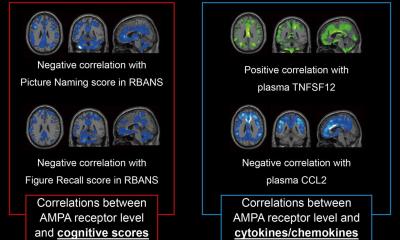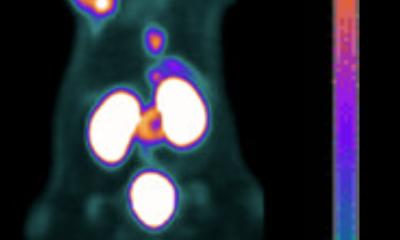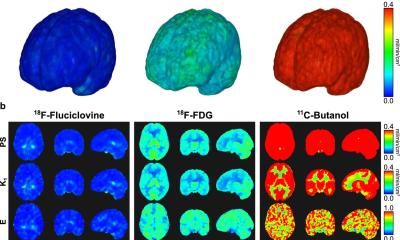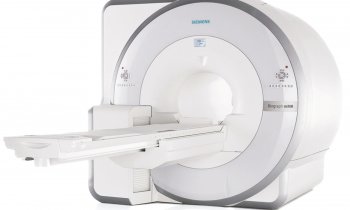Hybrid PET and MRI Imaging on the Horizon
Preliminary research presented at SNM’s 58th Annual Meeting is breaking new ground for the development of a brand new hybrid molecular imaging system. Simultaneous positron emission tomography (PET) and magnetic resonance imaging (MRI) is providing important diagnostic information about soft tissues and physiological functions throughout the body. Scans focused on screening suspicious lesions for cancer are already comparable to more conventional molecular imaging methods. Further research could lead to the clinical use of PET/MRI as an additional tool for detecting cancer and other diseases.
“Combining MRI technology with PET in a single integrated system adds the advantages of the extremely broad spectrum of diagnostic MRI procedures to the arsenal of available PET procedures,” said Alexander Drzezga, MD, TU Muenchen, Munich, Germany, lead author of the study. “This could potentially result in the development of new imaging agents that bring together specific diagnostic strengths of PET and MRI. It offers exciting scientific options to image physiologic and pathophysiologic processes at the same time and to improve our understanding of both. This and further studies could potentially open a whole new hybrid imaging discipline within the field of nuclear medicine.”
The most commonly used hybrid molecular imaging technology is the PET/CT system. MRI shows some advantages for combination with PET when compared to computed tomography (CT), which uses X-ray technology to capture structural information but it is not as sensitive as MRI data in terms of soft tissue contrast. CT images of certain areas of the body—including the brain, head and neck, and pelvis—provide restricted resolution of anatomical structures. MRI technology is excellent for imaging these complex areas of soft tissue and may provide answers to unresolved musculoskeletal questions. In combination with PET, MRI may also have value for imaging liver and breast tissues and would provide a useful tool for imaging children due to its reduced radiation dose.
Simultaneous PET and MRI imaging has been a tricky business, as the magnetic field of MRI technology has limited PET imaging in the past, specifically the photomultipliers needed for data acquisition. Previous prototypes have been simply side-by-side designs or were solely for imaging the brain. The advent of “avalanche photodiodes” and their introduction to the new, fully integrated and whole-body PET/MRI prototype used in the current study is a leap forward for this technology. A number of these integrated scanners are available for research purposes worldwide. It is speculated that these systems will grow rapidly in number if clear clinical benefit continues to be demonstrated.
For this study, eleven patients with cancer diagnoses underwent dual-imaging single-injection PET/CT imaging followed by PET/MRI imaging. Simultaneous PET/MRI acquisition was feasible and offered good-quality PET and MRI diagnostic data. Tracer-uptake was similar in relation to lung, liver, spleen and bone scanning, all acquired within a short examination timeframe. Results already indicate that combined PET/MRI shows comparable performance in the detection, diagnosis and allocation of suspected tumors in patients with oncological diagnoses as compared to conventional PET/CT.
The next step for PET/MRI is studying the added benefit of introducing sophisticated MRI sequences to the diagnostic imaging protocol. This and other related studies may lead to the establishment of hybrid PET/MRI imaging as a new diagnostic imaging system similar to PET/CT for its effectiveness and ability to provide a wealth of both functional and anatomical information about the body.
Scientific Paper 262: A. Drzezga, M. Souvatzoglou, A. Beer, S. Ziegler, S. Fürst, S. Nekolla, M. Schwaiger, TU Muenchen, Munich, Germany; “Integrated simultaneous whole-body MR/PET: First comparison between MR/PET and PET/CT in patients,” SNM’s 58th Annual Meeting, June 4–8, 2010, San Antonio, TX.
14.06.2011











